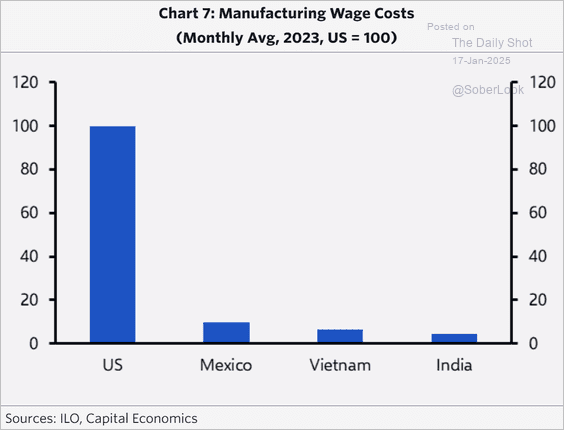This is obviously Trump's big dream. Yet the tariffs which he applied to China and other countries in his first term (which were kept in place and increased by Biden), didn't move the needle. So why did eight years of tariffs not move the needle?
The following chart explains the problem:
American wages are too high. BTW, this applies to everything, not just manufacturing. A software developer in the UK earns about £50k to £70k ($62k to $87k), their equivalent in the US will easily earn six figures.
If wages are too high, you can substitute with machinery. But machinery requires capital. In Trump's first term, interest rates were 1%. But that still wasn't low enough to bring highly automated factories to the US. Even with low interest rates, it was still cheaper to manufacture abroad.
So now he's going to try a blanket tariff on the rest of the world, including on countries that have a Value Added Tax. But interest rates are 4.5%. So the numbers still don't work.
The only thing that might make manufacturing in the US viable is "Internal Devaluation". This is where domestic wages are forced down. This is what Greece went through under the stern management of the IMF and the EU. Wages were forced down by over 25% to make them competitive. It was very painfull, especially for those servicing debt on a reduced wage.
Will Americans accept that kind of medicine? It's not really what they voted for. Greeks only did it because they were experiencing an acute crisis, and the bond markets wouldn't lend to them.
Trump might only achieve his dream of manufacturing returning, if the bond markets force a sovereign debt crisis on the USA. But that will be so painful, not least for the banks, that I am not sure anyone will thank him.

